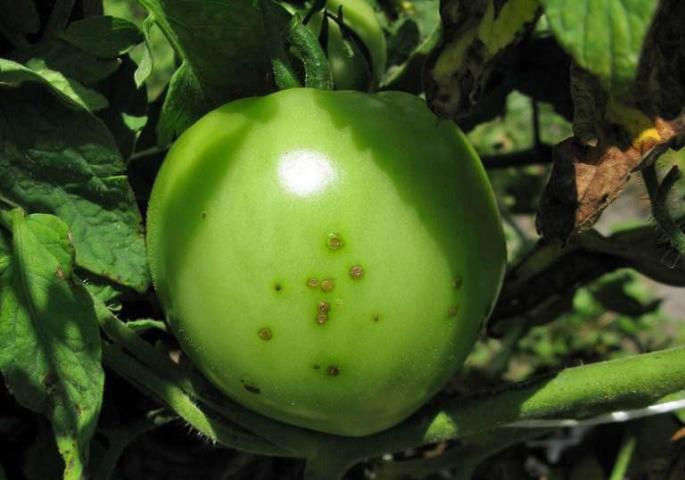By Clint Thompson
Tomato season may have just ended in North Florida, but the fall crop will soon be planted. Josh Freeman, University of Florida Institute of Food and Agricultural Sciences (UF/IFAS) associate professor in horticultural science, estimates planting will begin around July 20-23.

Credit: Gary Vallad, UF/IFAS
But growers should be mindful of one disease that could threaten the fall crop, especially amid the current weather conditions.
“The thing you worry about with this fall crop going into the ground compared to the spring crop when conditions aren’t conducive for bacterial spot, out of the gate you start with very conducive bacterial spot conditions in the fall. It’s hot and wet,” Freeman said. “If you get started with bacterial spot before first tie, it is a problem. It will bear its head every week until Thanksgiving.”
Disease Symptoms
Bacterial spot symptoms can affect all parts of the plant above ground, according to UF/IFAS. Leaf lesions start as circular and water-soaked spots but will turn dark brown to black with a wet or greasy appearance.
Because of the current susceptibility of the plants, growers need to be active in their fungicide sprays this tomato season.
“They’ll probably start the first week with systemic required resistance inducers Actigard. Their first application may be a contact insecticide and a low rate of Actigard to get the plant’s defense system primed up as soon as it gets into the ground,” Freeman said.
“If this (disease) shows up a month and a half from now, it will be a problem. A month and a half from now you will have full canopy plants. You can’t get in to spray because you don’t know when it’s going to rain and how long it’s going to rain. Once you get to second tie and we’re in this same weather pattern we are now (regular rains), the plants never dry off.”









